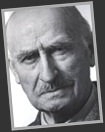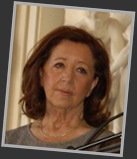 The Leica is the renowned pioneer 35mm camera - a classic German product - precise, minimalist, and utterly efficient. What is less well-known is that its designer used the same slick, professional technique to rescue hundreds of Jews from Nazi Germany.
The Leica is the renowned pioneer 35mm camera - a classic German product - precise, minimalist, and utterly efficient. What is less well-known is that its designer used the same slick, professional technique to rescue hundreds of Jews from Nazi Germany.
Indeed it is said that Ernst Leitz and his family acted with grace, generosity, modesty and extraordinary heroism under the Nazis.
Moreover, the story below tells how Leitz, the designer and manufacturer of Germany 's most famous photographic product, kept forever secret his help for so many of his Jewish fellow countrymen – thus echoing the exploits of Italian champion cyclist, Gino Bartali.
Indeed, “Ernst Leitz II, the steely-eyed Protestant patriarch who headed the closely held firm as the Holocaust loomed across Europe, acted in such a way as to earn the title, "the photography industry's Schindler."
“As soon as Adolf Hitler was named Chancellor =f Germany in 1933, Ernst Leitz II began receiving frantic calls from Jewish associates, asking for his help in getting them and their families out of the country. As Christians, Leitz and his family were immune to Nazi Germany's Nuremberg Laws, which restricted the movement of Jews and limited their professional activities.
“To help his Jewish workers and colleagues, Leitz quietly established the so-called “Leica Freedom Train," a covert means of allowing Jews to leave Germany in the guise of Leitz employees being assigned overseas.
“Employees, retailers, family members, even friends of family members were "assigned" to Leitz sales offices in France, Britain, Hong Kong and the United States. Leitz's activities intensified after the Kristallnacht of November 1938, during which synagogues and Jewish shops were burned across Germany.
“Before long, German "employees" were disembarking from the ocean liner Bremen at a New York pier and making their way to the Manhattan office of Leitz Inc., where executives quickly found them jobs in the photographic industry.
“Each new arrival had around his or her neck the symbol of freedom - a new Leica camera.
“The refugees were paid a stipend until they could find work. Out of this migration came designers, repair technicians, salespeople, marketers and writers for the photographic Press.
“Keeping the story quiet, The "Leica Freedom Train" was at its height in 1938 and early 1939, delivering groups of refugees to New York every few weeks. Then, with the invasion of Poland on Sept. 1, 1939, Germany closed its borders.
“By that time, hundreds of endangered Jews had escaped to America, thanks to the Leitzes' efforts. How did Ernst Leitz II and his staff get away with it?
“Leitz, Inc. was an internationally recognised brand that reflected credit on the newly resurgent Reich. The company produced cameras, range-finders and other optical systems for the German military. Also, the Nazi government desperately needed hard currency from abroad, and Leitz's single biggest market for optical goods was the United States.
“Even so, members of the Leitz family and firm suffered for their good works. A top executive, Alfred Turk, was jailed for working to help Jews and freed only after the payment of a large bribe.
“Leitz's daughter was imprisoned by the Gestapo after she was caught at the border, helping Jewish women cross into Switzerland. Eventually she was freed but endured rough treatment in the course of questioning. She also fell under suspicion when she attempted to improve the living conditions of up to 800 Ukrainian slave labourers, all of them women, who had been assigned to work in the plant during the 1940s.
“(After the war, Elsie Kuhn-Leitz received numerous honours for her humanitarian efforts, among them the Officier d'Honneur Des Palms Academic from France in 1965 and the Aristide Briand Medal from the European Academy in the 1970s.)
“Why has no one told this story until now? According to Norman Lipton, a freelance writer and editor, the Leitz family wanted no publicity for its heroic efforts. Only after the last member of the Leitz family was dead did the "Leica Freedom Train" finally come to light.
“It is now the subject of a book, The Greatest Invention of the Leitz Family: The Leica Freedom Train by Frank Dabba Smith, a California-born rabbi living in England .
* Rabbi Dabba Smith studied Linguistic Anthropology at the University of California at Berkeley, and qualified as a teacher. In 1994 he was ordained as a rabbi at Leo Baeck College, London. He joined Harrow and Wembley Progressive Synagogue ,London, England in 1997, where he had served as assistant rabbi.
He also works as a freelance photographer, and The Economist has published more than 150 of his images. His rabbinical thesis, Photography and the  Holocaust, is a critical approach to surveying the use of photography as a communications and propaganda device by all parties involved in the Holocaust.
Holocaust, is a critical approach to surveying the use of photography as a communications and propaganda device by all parties involved in the Holocaust.
* I Am a Camera, a play inspired by Christopher Isherwood's novel Goodbye to Berlin, is part of The Berlin Stories. The title is a quote taken from the novel's first page. The Broadway play earned the infamously scathing review by major U.S. theatre critic, Walter Kerr, "Me no Leica".
msniw



No comments:
Post a Comment